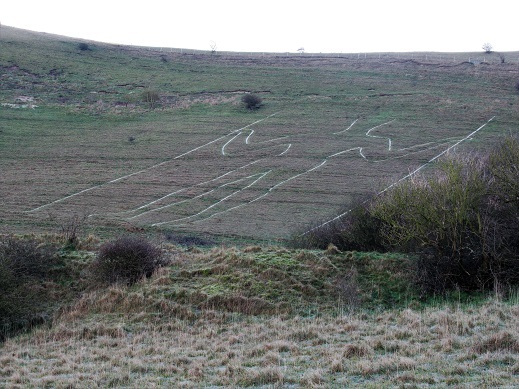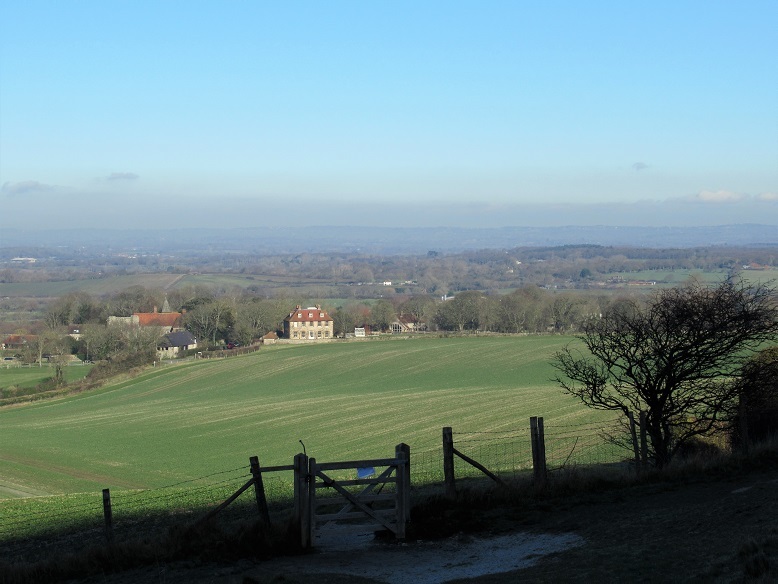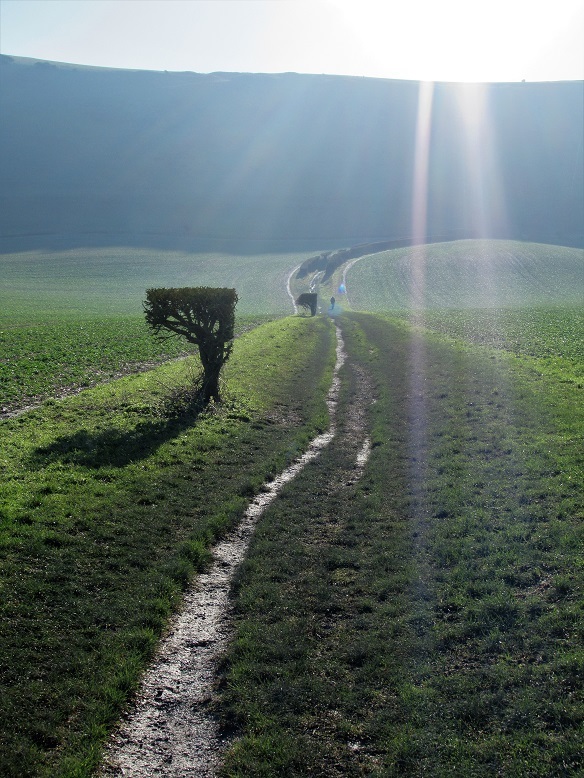Windover Hill
Jan. 22nd, 2020 09:25 amI was under the hill, walking away from it, but I could still hear the voices of the people who were walking on its flank- a long way off- which was confirmation of what I'd read on the website- that Windover Hill- or at least the section of it on which the Long Man lies- forms a natural auditorium. Could this be what it was used for in prehistory? A person standing on the head of the Long Man- a person with a trained voice- could almost certainly make themselves heard to a crowd assembled at the hill's foot. It would be as if the Long Man himself were speaking.

The Long Man is one of the most mysterious of England's hill figures. Originally cut into the chalk of the hill, he's been renewed many times and is currently formed from concrete blocks with a coating of white paint. There's no agreement about his date or what he represents. He's the empty outline of a man with arms extended- each hand holding a staff. Or are they opening a door- a door into the hillside? Who knows? Windover Hill looks down on the village of Wilmington and so across the Weald. Wilmington was never an important place- at least not in historic times. There was a small priory there- of which bits and pieces remain. The hill itself is scarred with ancient flint mines and knobbed with barrows and tumuli.

The nearer you get to the Long Man the harder he is to make out. Aerial photographs show him as somewhat elongated- which means his makers made allowance for the way he would appear, in perspective, from below. Positioned as he is on the northward facing face of the hill he is almost always in shadow- a white figure on a dark ground. Does the sun reach him in midsummer, cutting across him slantwise from the western or eastern horizon or down from the zenith? I need to go back in August and find out.


The Long Man is one of the most mysterious of England's hill figures. Originally cut into the chalk of the hill, he's been renewed many times and is currently formed from concrete blocks with a coating of white paint. There's no agreement about his date or what he represents. He's the empty outline of a man with arms extended- each hand holding a staff. Or are they opening a door- a door into the hillside? Who knows? Windover Hill looks down on the village of Wilmington and so across the Weald. Wilmington was never an important place- at least not in historic times. There was a small priory there- of which bits and pieces remain. The hill itself is scarred with ancient flint mines and knobbed with barrows and tumuli.

The nearer you get to the Long Man the harder he is to make out. Aerial photographs show him as somewhat elongated- which means his makers made allowance for the way he would appear, in perspective, from below. Positioned as he is on the northward facing face of the hill he is almost always in shadow- a white figure on a dark ground. Does the sun reach him in midsummer, cutting across him slantwise from the western or eastern horizon or down from the zenith? I need to go back in August and find out.

